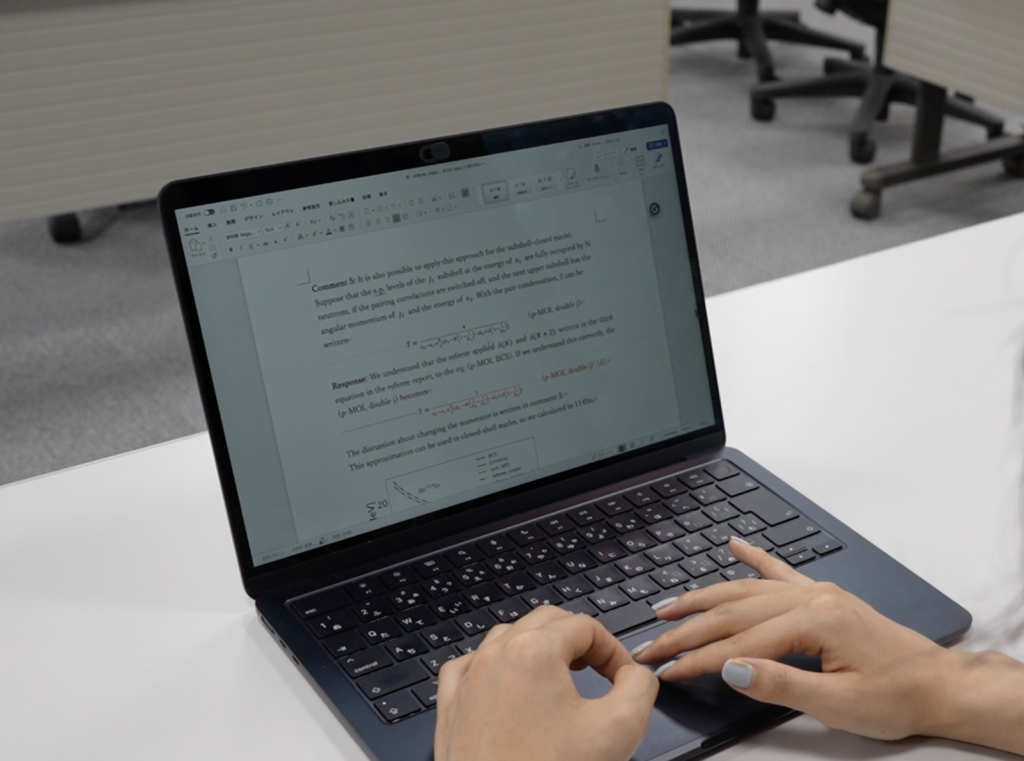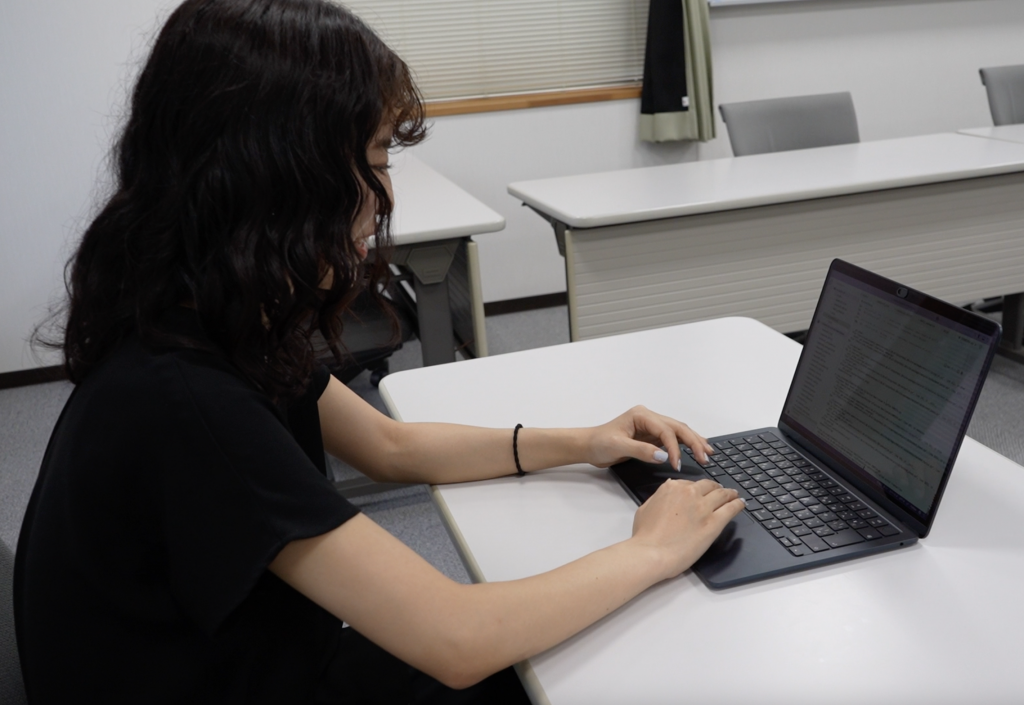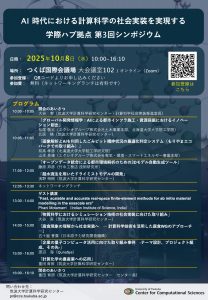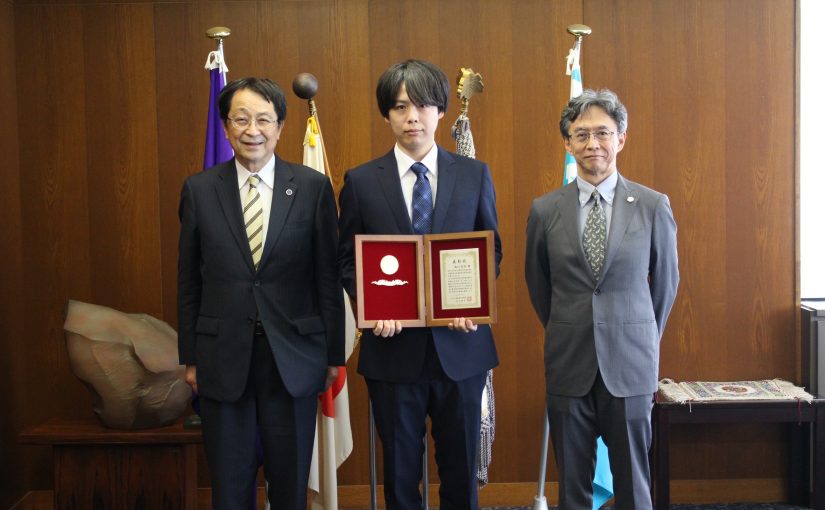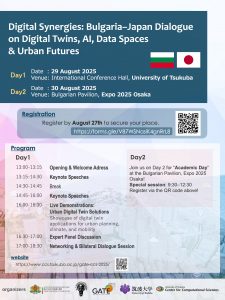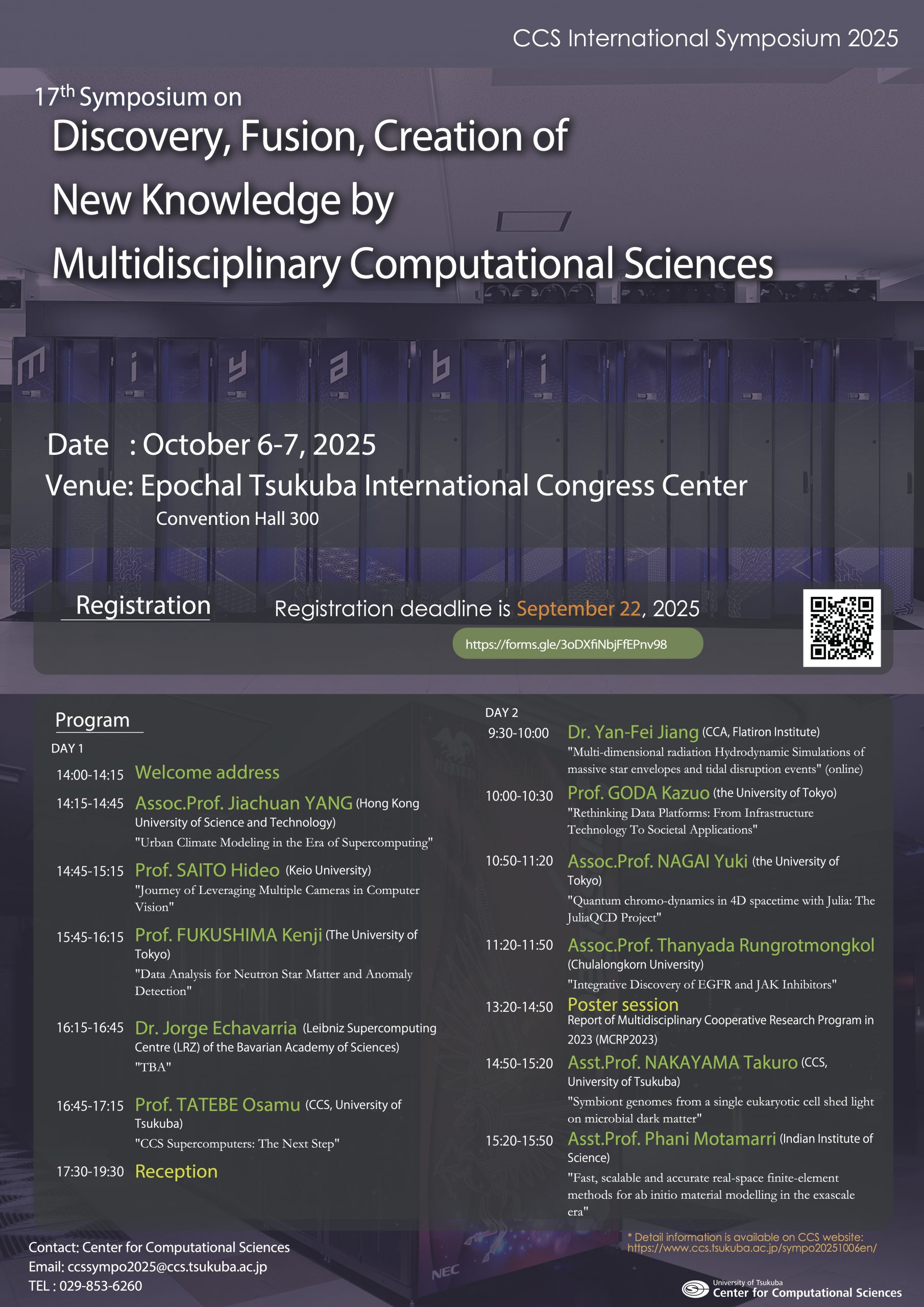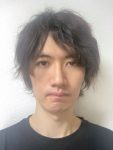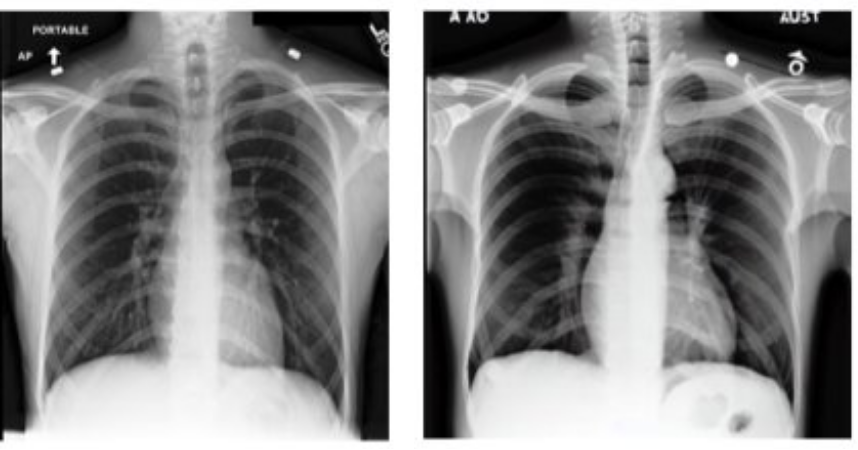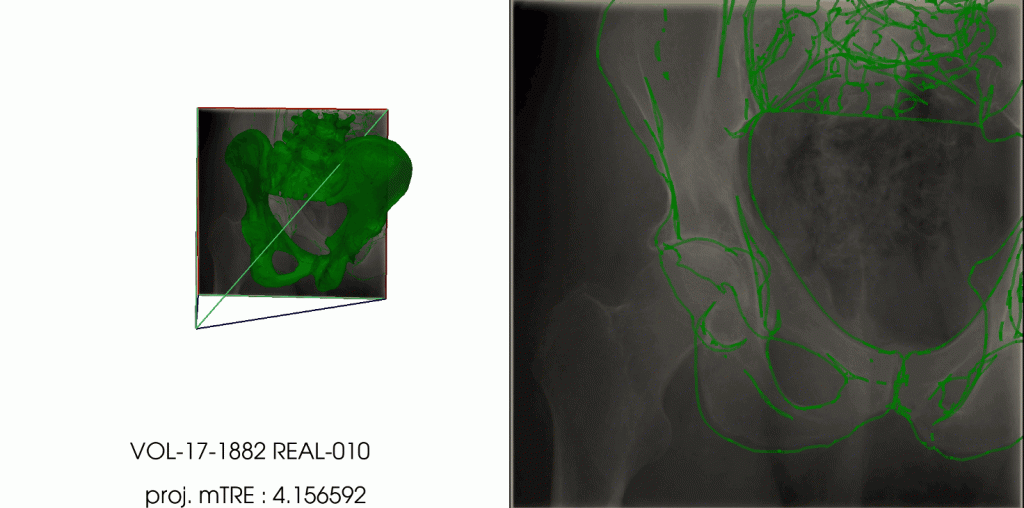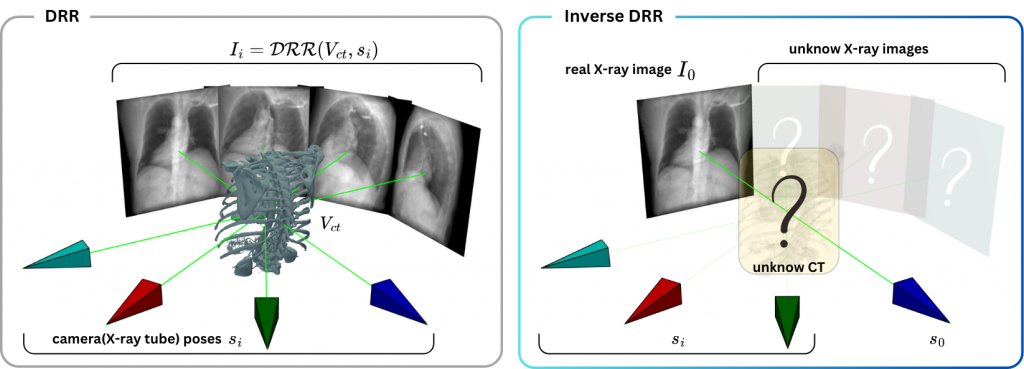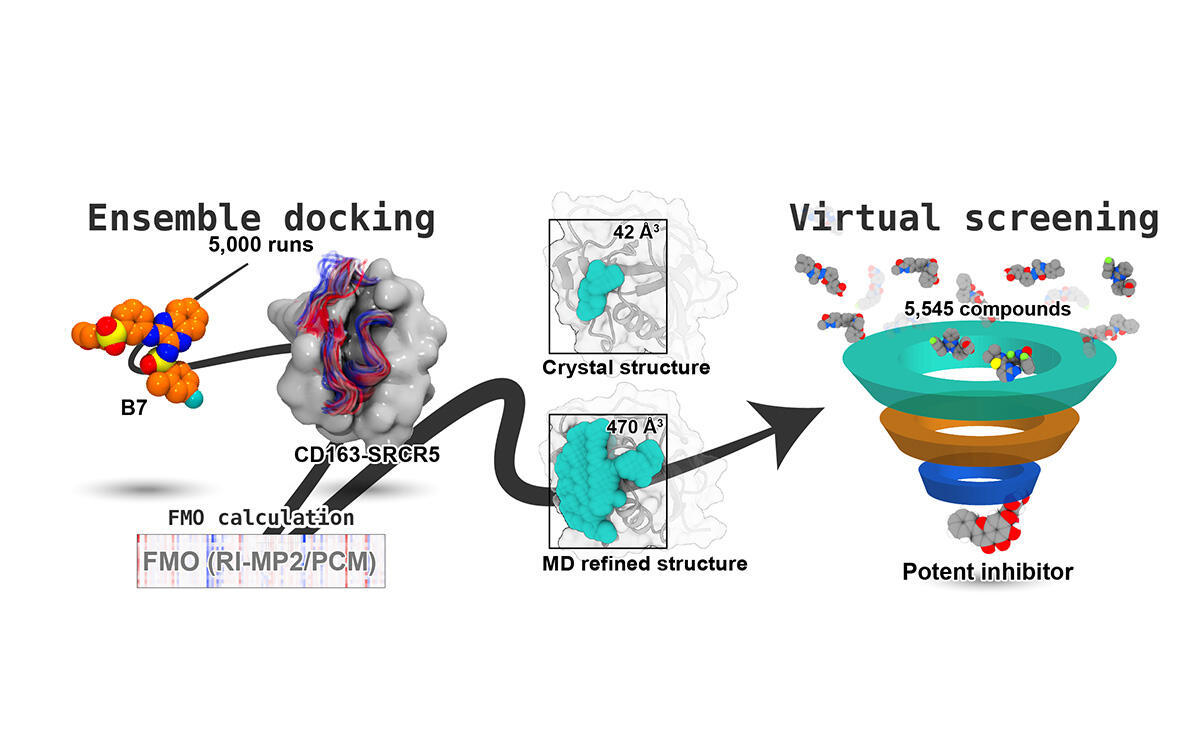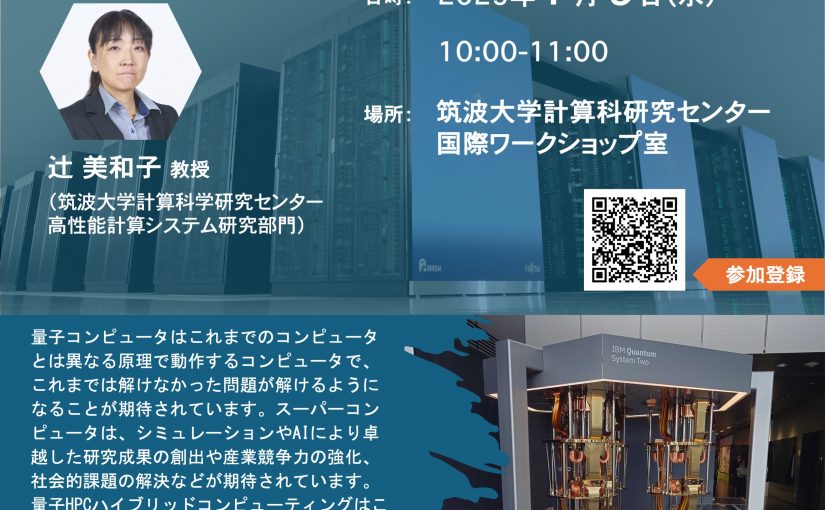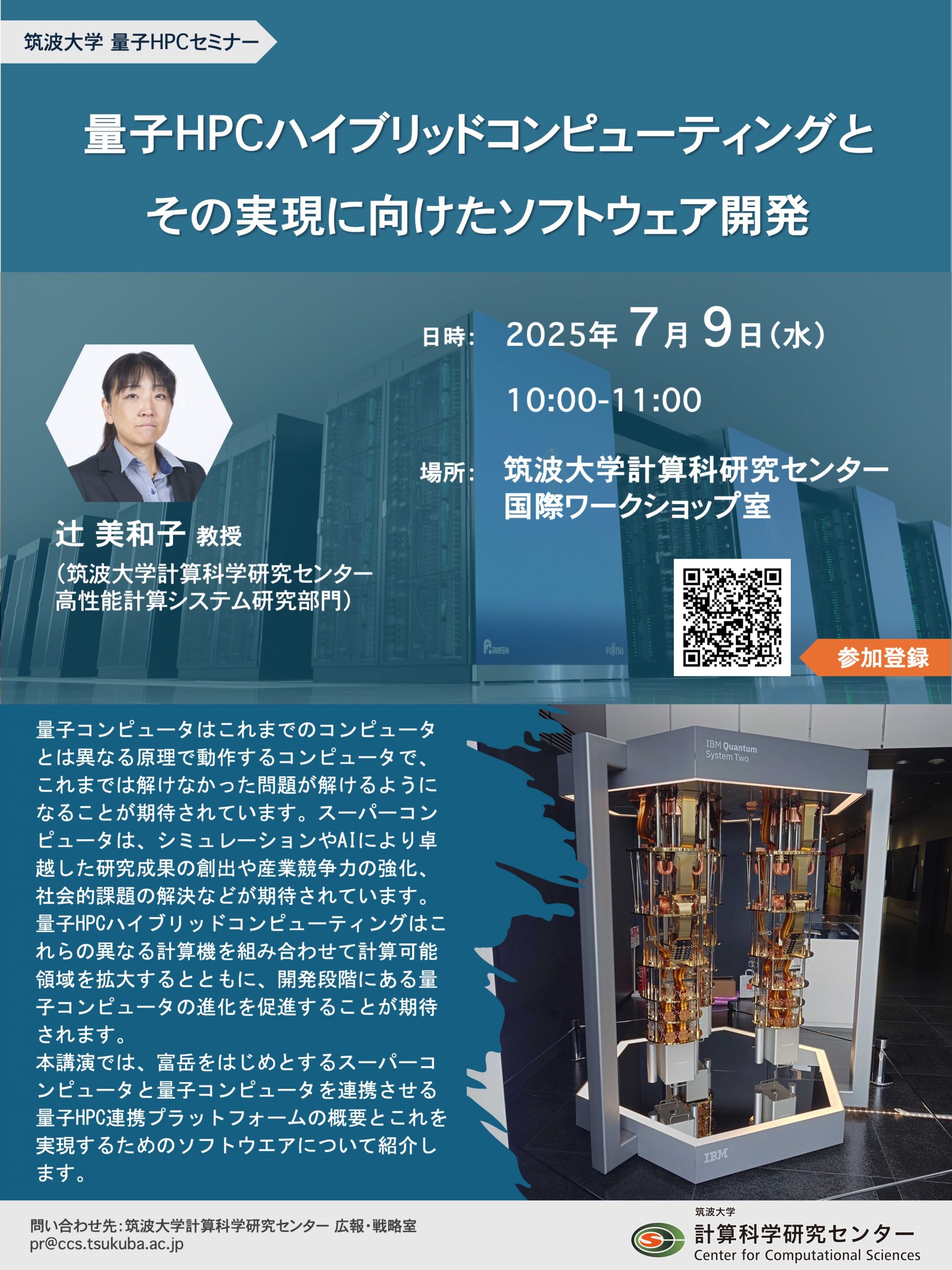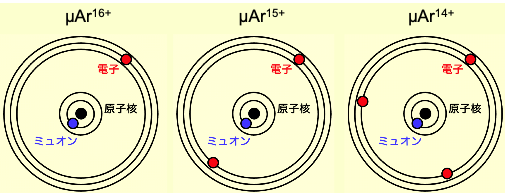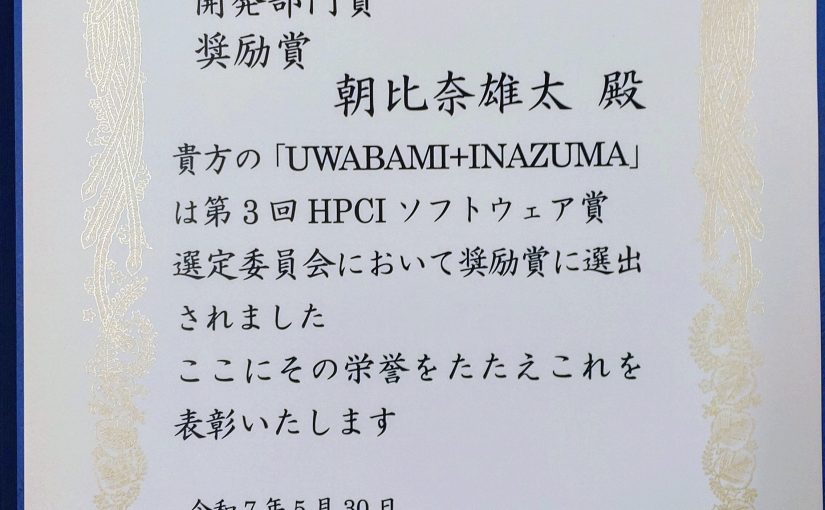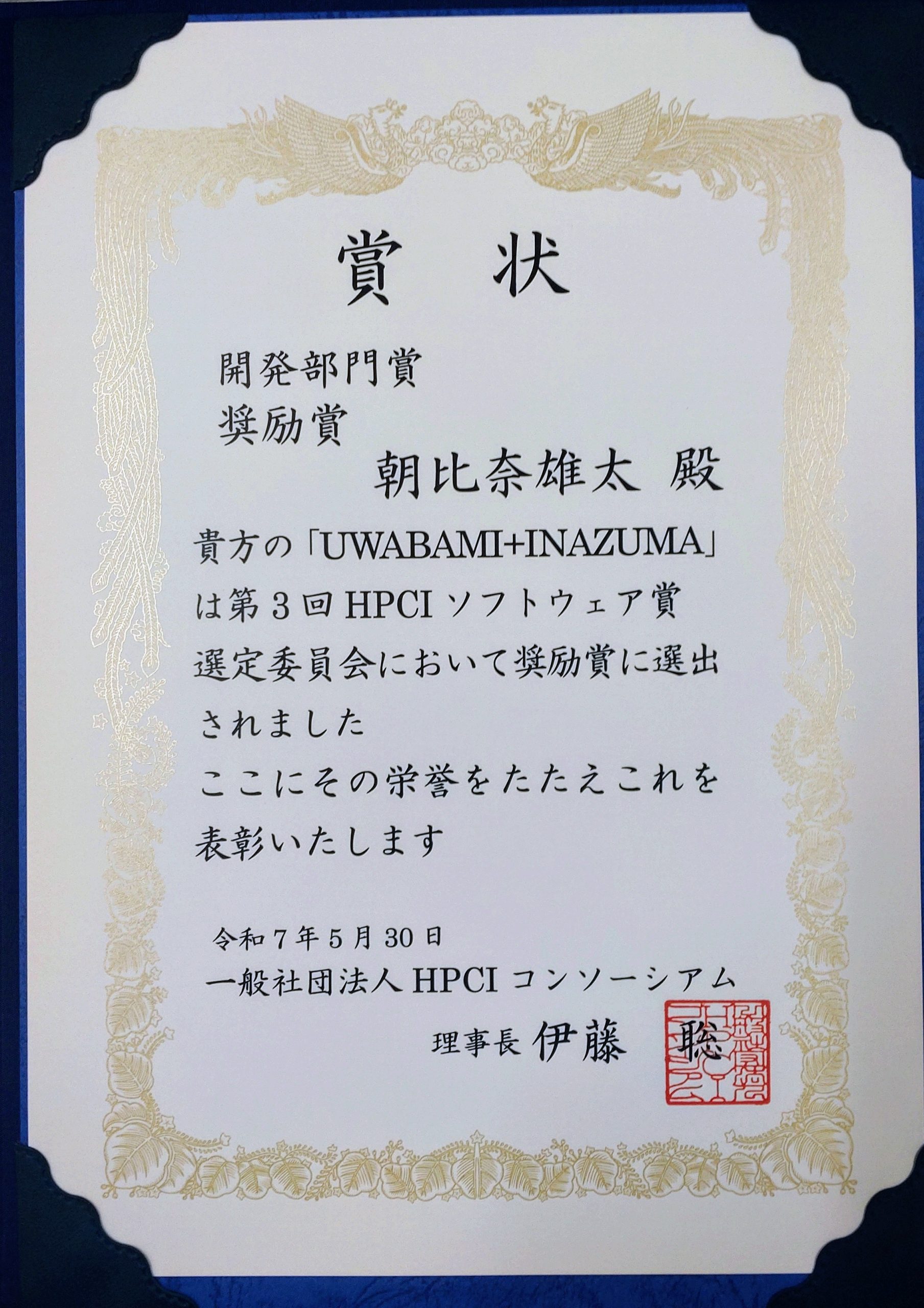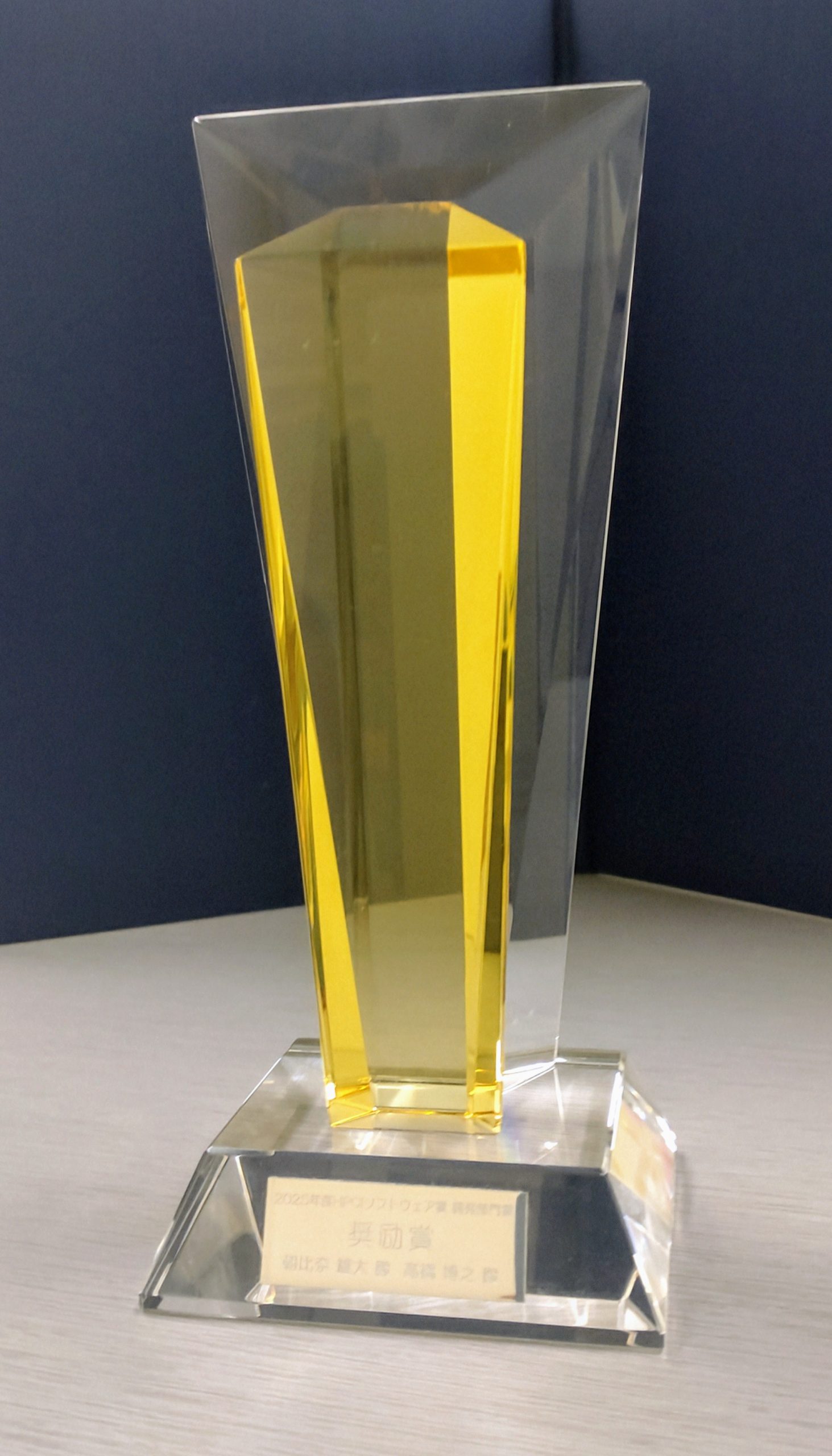Join Us for an Exclusive Bulgaria–Japan Innovation Dialogue!
Date and Venue / Program Day1, Day2 / Registration
Outlines:
In the spirit of strengthened bilateral cooperation between Bulgaria and Japan, these two interconnected events convene leading voices from government, academia, and industry to explore shared opportunities at the intersection of Digital Twins, Artificial Intelligence, Big Data, and Data Spaces.
The events build upon the positive momentum of the Joint Statement on the Establishment of Strategic Partnership between the Republic of Bulgaria and Japan, signed on 20th May 2025 in Tokyo by President of Bulgaria Rumen Radev and Prime Minister of Japan Shigeru Ishiba. This high-level agreement highlights a mutual commitment to deepen digital cooperation and celebrates the strategic academic partnership between the GATE Institute (Bulgaria) and the Center for Computational Sciences (CCS), University of Tsukuba (Japan), as a key pillar of this vision.
Together, the two-day programme will strengthen institutional ties, promote co-creation, and advance collaborative agendas for sustainable, digital, and resilient urban futures. 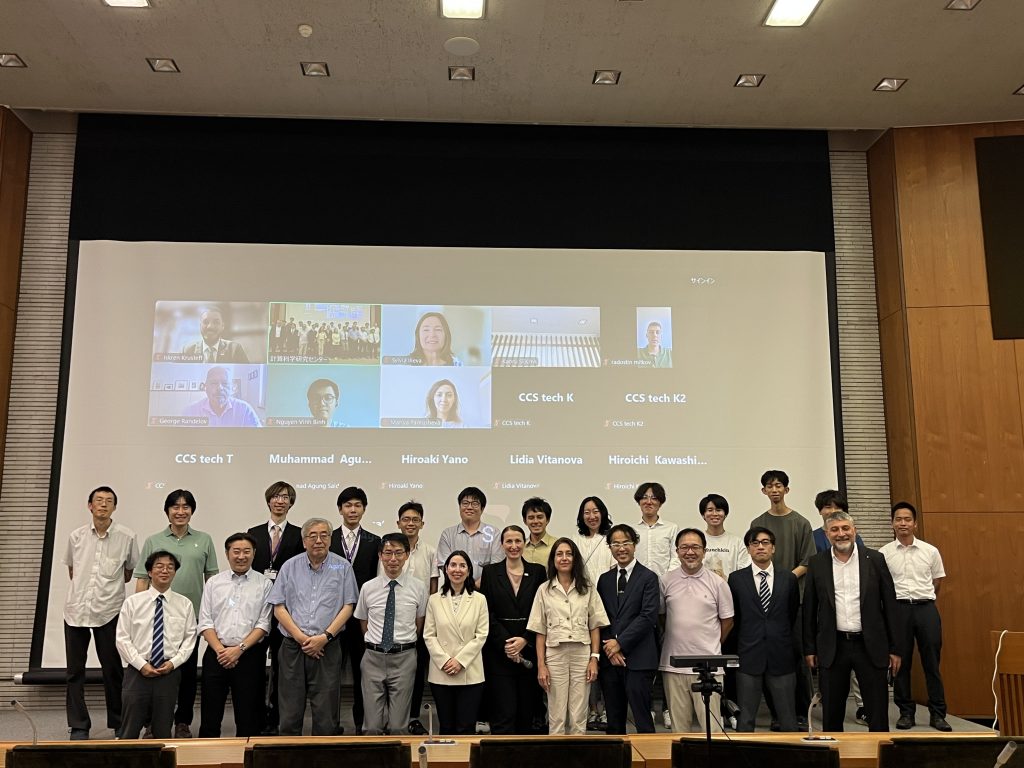
Date and Venue
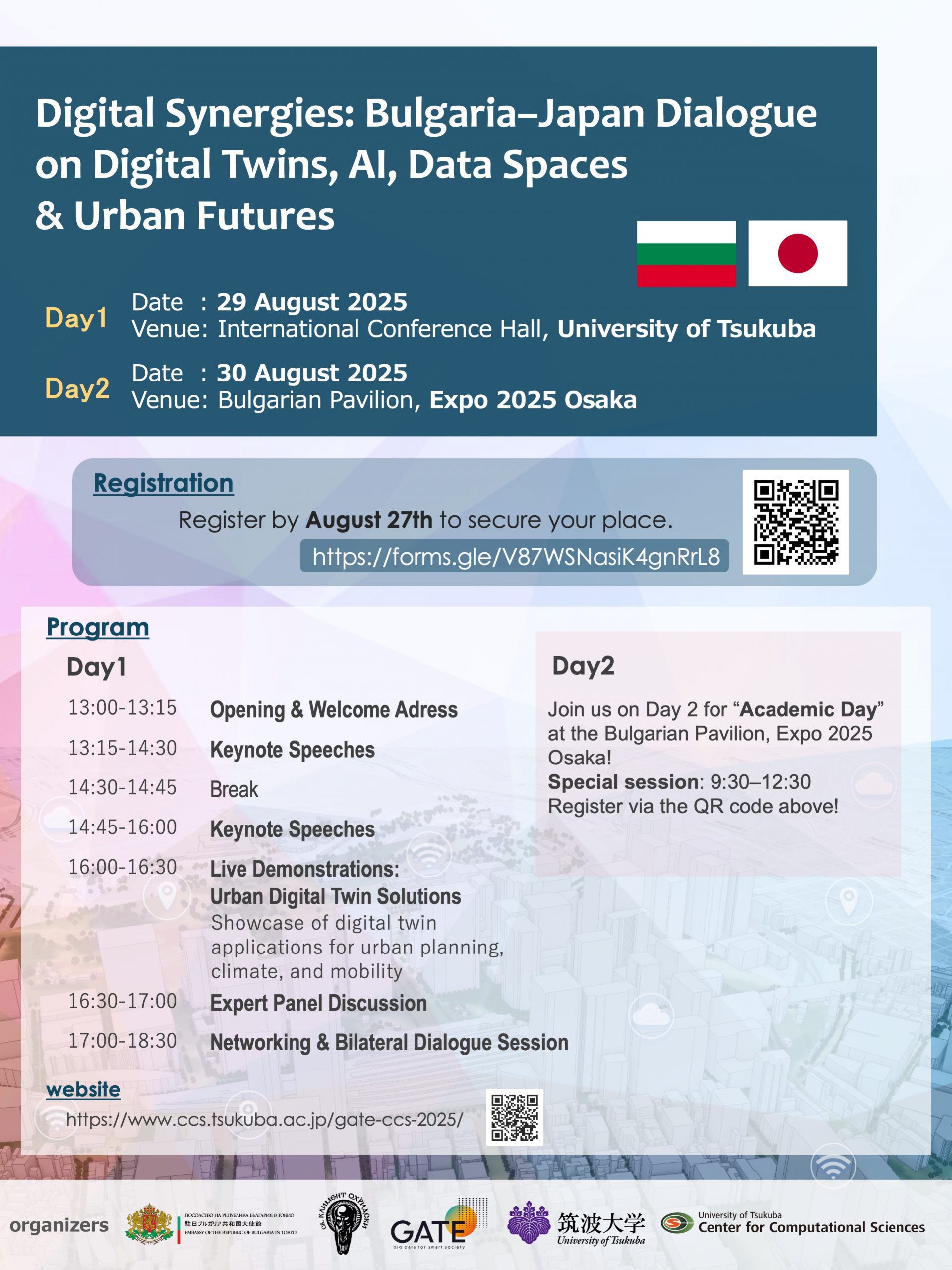 Day 1: 29 August 2025 | 13:00–18:30 JST, 7:00–12:30 EEST
Day 1: 29 August 2025 | 13:00–18:30 JST, 7:00–12:30 EEST
International Conference Hall, University of Tsukuba
Day 2: 30 August 2025 | 9:30–12:30 JST
Bulgarian Pavilion, Expo 2025 Osaka
Program
Day1
“Digital Synergies: Bulgaria–Japan Dialogue on Digital Twins, AI, Data Spaces & Urban Futures”
A high-level academic and policy forum focused on technological cooperation in smart cities and digital innovation.
Language: English
|
Time (JST)
|
Activity
|
Details / Highlights
|
Person in Charge / Speaker
|
|
Chair: Dr. VITANOVA Lidia, GATE Institute
|
|
13:00 –13:05
|
Opening & Welcome
|
Introductory remarks by organisers and diplomatic representatives
|
Prof. SHIGETA Yasuteru, Director of the Center for Computational Sciences (CCS), the University of Tsukuba
|
|
Prof. ILIEVA Sylvia, Director of the GATE Institute
|
|
H. E. Ms. ARABADJIEVA Marieta, Ambassador of the Republic of Bulgaria to Japan
|
|
13:05 –13:20
|
Presentation
|
Introduction of the CCS and the University of Tsukuba
|
Prof. SHIGETA Yasuteru, Director of the Center for Computational Sciences (CCS), the University of Tsukuba
|
|
13:20 –13:35
|
Presentation
|
Introduction of the GATE Institute
|
Prof. PETROVA-ANTONOVA Dessislava, Lead of Future Cities Group, GATE Institute
|
|
13:35 –13:50
|
Presentation
|
Invest in Bulgaria
|
Ms. NENOVA Mila, Executive Director, Invest Bulgaria Agency
|
|
13:50 –14:05
|
Presentation
|
Bulgaria as a leading innovation hub in Europe
|
H. E. Ms. ARABADJIEVA Marieta, Ambassador of the Republic of Bulgaria to Japan
|
|
14:05 –14:20
|
Presentation
|
PLATEAU: Japan’s Urban Digital Twin Initiative
|
Ms. SOGAWA Yuka, Senior Deputy Director (Director of Project PLATEAU), International and Digital Policy Division, City Bureau, Ministry of Land, Infrastructure, Transport and Tourism, Japan
|
|
14:20 –14:35
|
Presentation
|
Bridging Japan and Bulgaria: Empowering Startups for Global Expansion
— JETRO’s Role in Connecting Innovation Across Borders
|
Mr. KAWACHI Akira, Chief Director of JETRO Ibaraki
|
|
14:35 –14:50
|
Presentation
|
Driving Digital Transformation at Local Level in Bulgaria
|
Ms. DOCHEVA Yana, Team Lead “Strategic Development of Municipalities” National Association of Municipalities in the Republic of Bulgaria
|
|
14:50 –15:05
|
Presentation
|
Transformative Challenges for Tsukuba Super Science City
|
Prof. SUZUKI Kenji, Dean of the Institute of Systems and Information Engineering, University of Tsukuba
Advisor, City of Tsukuba (online)
|
|
15:05 –15:15
|
Break
|
|
|
|
Chair: prof. DOAN Quang-Van, CCS, University of Tsukuba
|
|
15:15 –15:30
|
Presentation
|
Urban Digital Twins for a Sustainable Future
|
Prof. KOEVA Mila, Vice Dean Research, ITC Faculty Geo-Information Science and Earth Observation, University of Twente (online)
|
|
15:30 –15:45
|
Presentation
|
NTT DATA’s AI Strategy Toward the Realization of Agentic AI
|
Mr. MORI Koya, Senior Manager, NTT DATA Group Corporation
|
|
15:45 –16:00
|
Presentation
|
From Data to Trust: The Bulgaria–Japan Ecosystem Approach
|
Mr. KRUSTEFF Iskren, CEO, Scalator
|
|
16:00 –16:30
|
Live Demonstrations
|
Showcase of Digital Twins, AI, Data Spaces & Urban Futures Applications
|
Mr. SHIRINYAN Evgeny, Experienced Researcher, GATE Institute
Prof. KAMEDA Yoshinari, CCS, University of Tsukuba
|
|
16:30 –16:50
|
Expert Panel Discussion
|
Synergising Academia, Government & Business for Digital Urban Futures
|
Prof. SHIGETA Yasuteru, Director of the Center for Computational Sciences (CCS), the University of Tsukuba
Prof. PETROVA-ANTONOVA Dessislava, Lead of Future Cities Group, GATE Institute
Mr. KAWACHI Akira, Chief Director of JETRO Ibaraki
H. E. Ms. ARABADJIEVA Marieta, Ambassador of the Republic of Bulgaria to Japan
|
|
16:50 –17:00
|
Closing Remarks & Summary
|
Key takeaways and next steps for collaboration
|
Prof. SHIGETA Yasuteru, Director of the Center for Computational Sciences (CCS), the University of Tsukuba
Prof. ILIEVA Sylvia, Director of the GATE Institute
H. E. Ms. ARABADJIEVA Marieta, Ambassador of the Republic of Bulgaria to Japan
|
|
17:10 –18:30
|
Networking & Bilateral Dialogue Sessions
|
Structured networking and bilateral cooperation discussions
Venue: Soup Factory in the University of Tsukuba
|
Organising Committees (GATE & CCS)
|
Organisers & Hosts
- GATE Institute, Bulgaria
- Center for Computational Sciences (CCS), University of Tsukuba, Japan
- Embassy of the Republic of Bulgaria in Tokyo
Supporting organisations
- Ministry of Education and Science, Bulgaria
- Ministry of Innovation and Growth, Bulgaria
- Ministry of Economy and Industry, Bulgaria
- Japan External Trade Organization
- Ministry of Land, Infrastructure, Transport and Tourism, Japan
Day2
“Academic Days of the GATE Institute”
Language: English
The Academic Days will spotlight the cutting-edge research and technological leadership of the GATE Institute, Bulgaria and the Center for Computational Sciences (CCS), Japan, showcasing their pivotal roles in shaping the future of AI, Data Spaces, Big Data and Urban Digital Twins. This dynamic event aims to catalyse cross-sector collaboration among academic, governmental, and industry stakeholders from Europe, Japan, and beyond.
Program Highlights:
- Immersive Introductory Movie – Discover GATE’s core missions and innovation roadmaps
- Interactive Exhibition and Discussion – GATE’s and CCS’s focus areas and highlights global collaboration, with emphasis on the strong Bulgarian-Japanese partnership
- Visual show of the Bulgarian Pavilion
|
Time (JST)
|
Activity
|
Details / Highlights
|
Person in charge
|
|
09:30 – 11:30
|
Academic Day 2 session
|
The details for each session are shown below (total sessions: 8 sessions x 15 min)
|
All
|
|
6 min
|
Visual show
|
Visual show of the Bulgarian pavilion
|
Mr. Kostov, Manager of the Bulgarian pavilion
Dr. Lidia Vitanova, GATE Institute
|
|
1 min
|
Welcome & Opening Remarks
|
Brief welcome and introduction
|
Prof. Dessislava Petrova-Antonova, GATE Institute
|
|
1 min
|
Welcome & Opening Remarks
|
Brief welcome and introduction
|
Prof. Shigeta Yasuteru, Director of the Center for Computational Sciences (CCS), the University of Tsukuba
|
|
3 min
|
Interactive Movie and Presentation
|
Interactive Movie and Introduction of the GATE Institute and the CCS, University of Tsukuba
|
Prof. Dessislava Petrova-Antonova, GATE Institute
Dr. Lidia Vitanova, GATE Institute
|
|
4 min
|
Exhibition Walkthrough
|
Showcasing projects and activities between the GATE Institute and the CCS, University of Tsukuba
|
Rotation between:
Prof. Shigeta, CCS
Prof. Boku, CCS
Prof. Dessislava Petrova-Antonova, GATE Institute
Prof. Kusaka, CCS
Prof. Doan, CCS
Dr. Lidia Vitanova, GATE Institute
|
|
11:30 – 11:40
|
Photo Spot / Group Picture
|
Official group photo
|
All (Closed)
|
|
11:40 – 12:20
|
Networking (Lunch)
|
Networking at the round table 2F at the Bulgarian pavilion
|
All (Closed)
|
|
12:20 – 12:30
|
Closing & Next Steps
|
Summary of outcomes and invitation to follow-up engagements
|
All (Closed)
|
Registration
Please complete your participation registration via the link below.
Register by August 27 for online participation.
*Registration for Networking & Bilateral Dialogue Sessions will close on August 22.
*Registration is free, and the fee for the Networking & Bilateral Dialogue Sessions on August 29 will be 7,000 JPY for non-students: 5,000 JPY, students: 3,000 JPY.
*Please prepare your own Expo admission ticket for participation on August 30.
>> Registration


